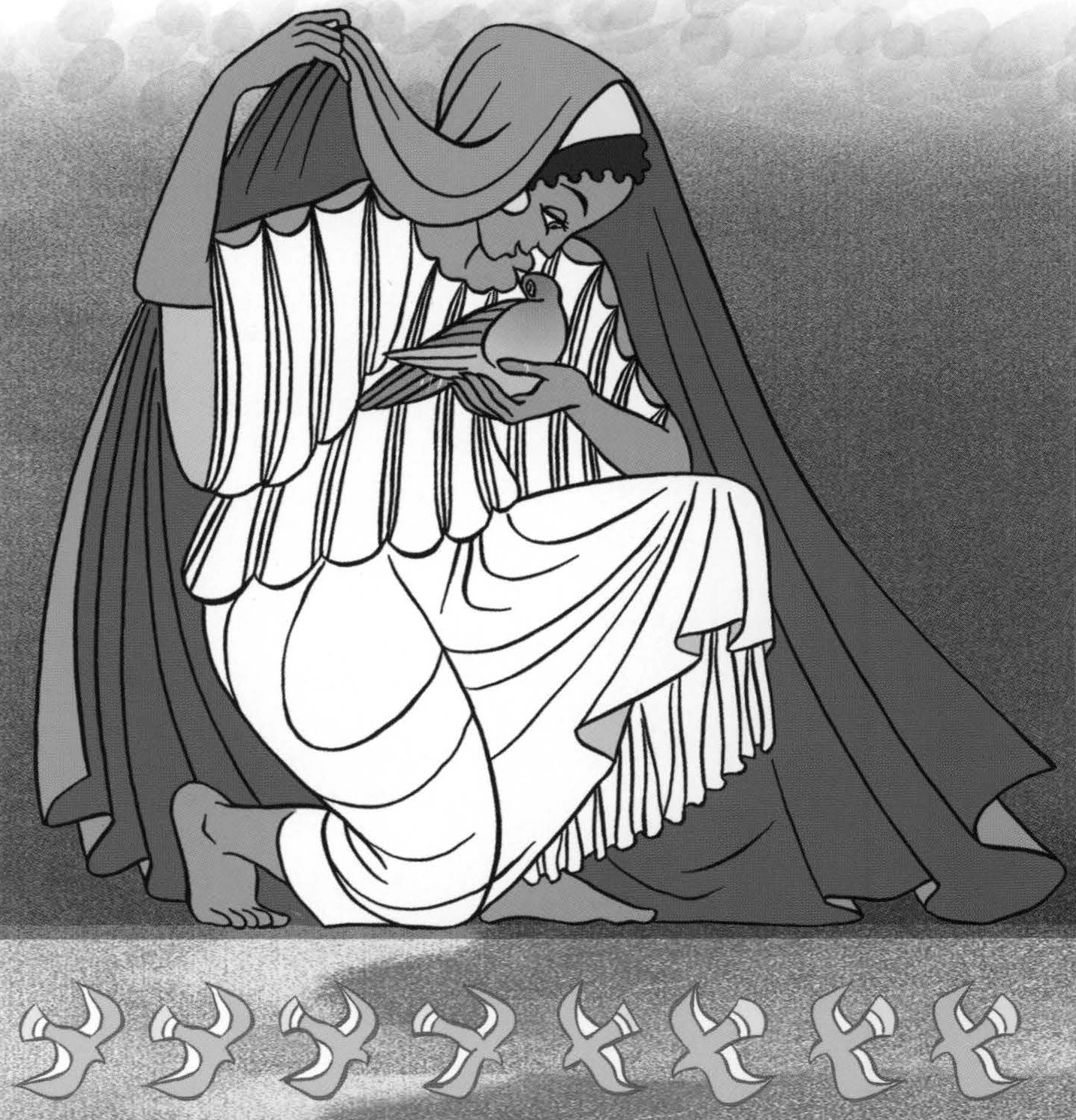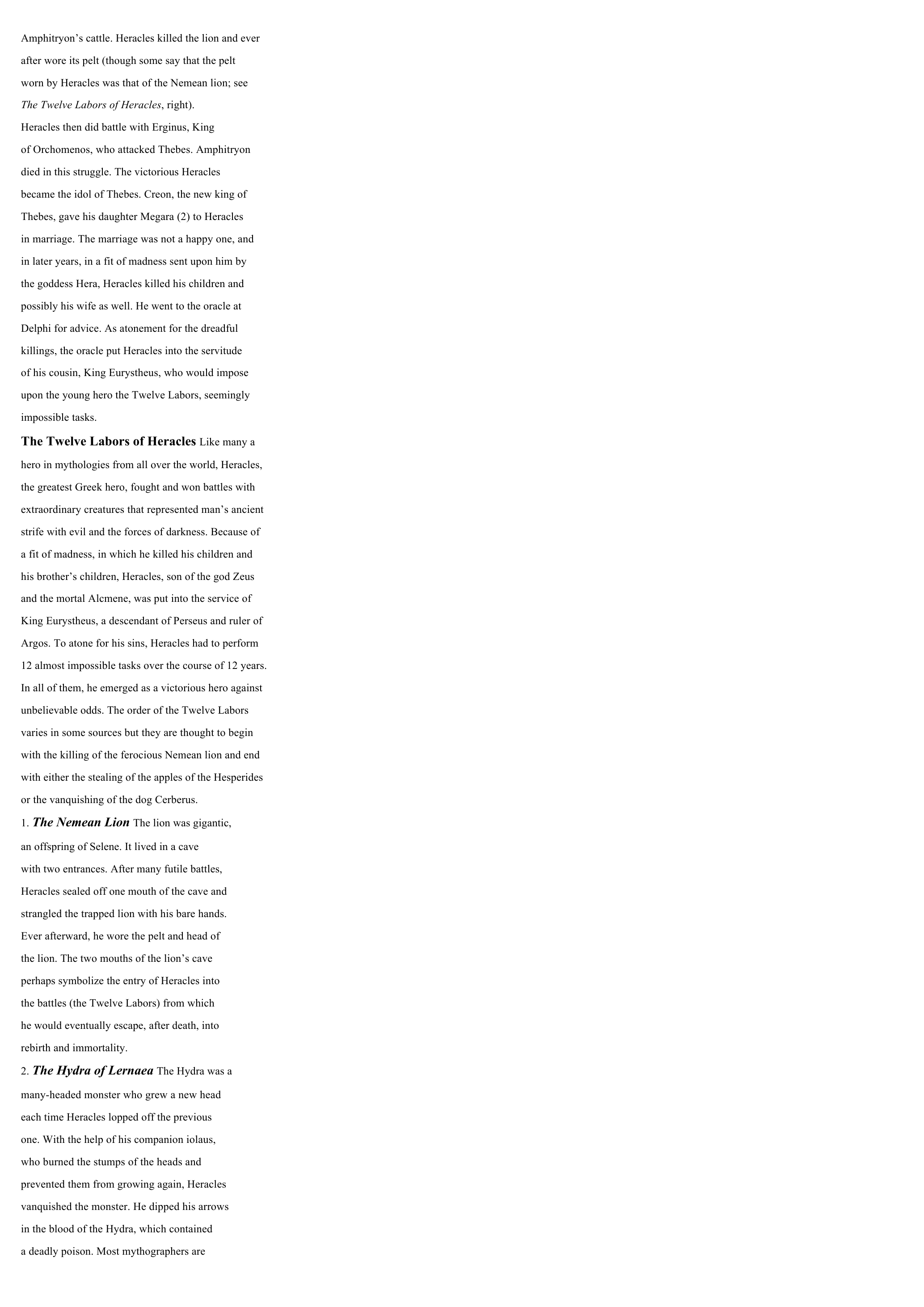Heracles (Herakles; Glory of Hera) Greek The greatest hero of Greek mythology, he was called Hercules by the Romans.
Publié le 26/01/2014

Extrait du document


«
Amphitryon’s cattle.
Heracles killed the lion and ever
after wore its pelt (though some say that the pelt
worn by Heracles was that of the Nemean lion; see
The Twelve Labors of Heracles , right).
Heracles then did battle with Erginus, King
of Orchomenos, who attacked Thebes.
Amphitryon
died in this struggle.
The victorious Heracles
became the idol of Thebes.
Creon, the new king of
Thebes, gave his daughter Megara (2) to Heracles
in marriage.
The marriage was not a happy one, and
in later years, in a fit of madness sent upon him by
the goddess Hera, Heracles killed his children and
possibly his wife as well.
He went to the oracle at
Delphi for advice.
As atonement for the dreadful
killings, the oracle put Heracles into the servitude
of his cousin, King Eurystheus, who would impose
upon the young hero the Twelve Labors, seemingly
impossible tasks.
The Twelve Labors of Heracles Like many a
hero in mythologies from all over the world, Heracles,
the greatest Greek hero, fought and won battles with
extraordinary creatures that represented man’s ancient
strife with evil and the forces of darkness.
Because of
a fit of madness, in which he killed his children and
his brother’s children, Heracles, son of the god Zeus
and the mortal Alcmene, was put into the service of
King Eurystheus, a descendant of Perseus and ruler of
Argos.
To atone for his sins, Heracles had to perform
12 almost impossible tasks over the course of 12 years.
In all of them, he emerged as a victorious hero against
unbelievable odds.
The order of the Twelve Labors
varies in some sources but they are thought to begin
with the killing of the ferocious Nemean lion and end
with either the stealing of the apples of the Hesperides
or the vanquishing of the dog Cerberus.
1.
The Nemean Lion The lion was gigantic,
an offspring of Selene.
It lived in a cave
with two entrances.
After many futile battles,
Heracles sealed off one mouth of the cave and
strangled the trapped lion with his bare hands.
Ever afterward, he wore the pelt and head of
the lion.
The two mouths of the lion’s cave
perhaps symbolize the entry of Heracles into
the battles (the Twelve Labors) from which
he would eventually escape, after death, into
rebirth and immortality.
2.
The Hydra of Lernaea The Hydra was a
many-headed monster who grew a new head
each time Heracles lopped off the previous
one.
With the help of his companion iolaus,
who burned the stumps of the heads and
prevented them from growing again, Heracles
vanquished the monster.
He dipped his arrows
in the blood of the Hydra, which contained
a deadly poison.
Most mythographers are.
»
↓↓↓ APERÇU DU DOCUMENT ↓↓↓
Liens utiles
- Iphicles Greek Halfbrother of the hero Heracles; son of Amphitryon, a prince of Tiryns, and his wife, Alcmene, who was a daughter of the king of Mycenae; husband to Automedusa, and later, to the youngest daughter of King Creon of Thebes.
- Nessus Greek The Centaur who caused the death of the hero Heracles.
- Omphale Greek The queen of Lydia who took the hero Heracles as her slave after he had desecrated the temple of Apollo.
- Persephone (Kore) Greek Daughter of Demeter and Zeus; called Proserpina by the Romans.
- Eros (Erotic Love) Greek God of love and fertility, called Cupid by the Romans.
















